
The Asset Register by datb
BIM asset information - read the blog post here.
AIMS is a versatile and flexible asset register for large infrastructure projects, enabling managed sharing of data between project owner and contractors.
AIMS has been implemented at High Speed 2 (HS2) and at East West Rail. Both of these are large programmes of work with multiple contractors all working from a common asset data set, managed by AIMS.




Benefit from up-to date information on assets and manage complex asset relationships.
With AIMS you can configure and manage different sets of asset classes such as civils, M&E, property, vehicles etc. on a single platform, giving complete control and visibility over your entire asset portfolio.
High Speed 2 has implemented AIMS at the core of its Asset Information needs. Read the case study to see how datb delivered an Asset Register for Europe’s largest infrastructure project.
AIMS will grow as the asset specifications are defined during the project lifecycle. The application is centred around the asset data dictionary which clearly depicts the asset hierarchy. Asset classes are versioned - essential for any medium- to long-term project, and updated asset class definitions shared amongst all of the project contractors.
Data requirements (attributes and relationships) can be made mandatory at specific project phases. This enables asset information to be recorded at outline level at early design stages but requiring additional information before they can be approved for delivery.
Attribute definitions may be specific hard or soft ranges, protecting data quality. These are enforced both when asset data is entered manually, and when it is loaded from external sources.
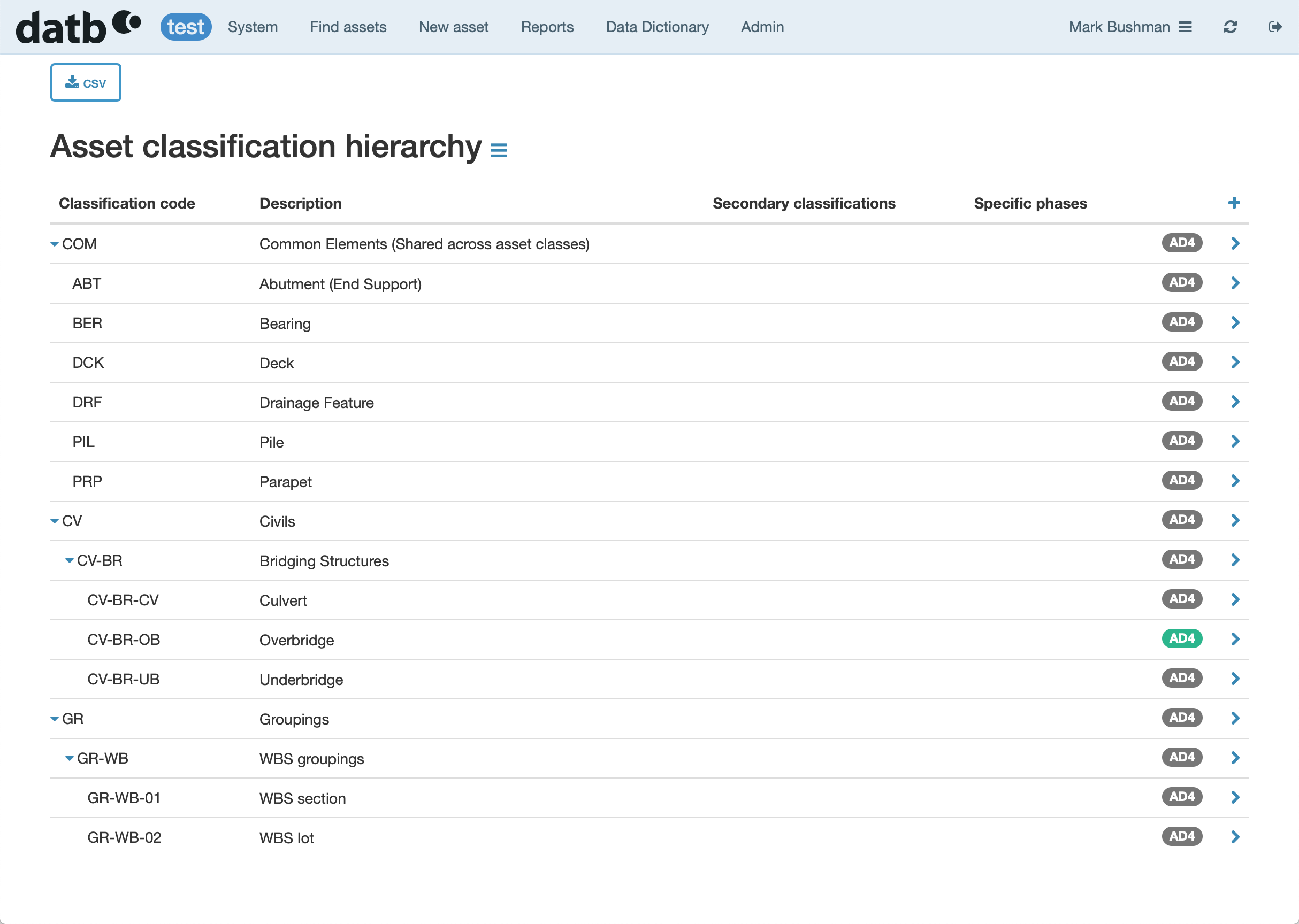
AIMS supports linear attributes, allowing multiple attributes values (with optional interpolation) to be recorded at offsets along the length of an asset. This can be used for any value that varies along an asset such as (using a rail example) maximum speed, curvature, cant, etc.
This can be easily integrated with a Geographical Information System (GIS), so your assets can be also visualised using Google maps, your in-house GIS system, or a combination, depending on user type.
Location data is incredibly flexible; multiple asset location types (address, GIS etc.) are supported, as well as polygons describing the asset area.
As you can see in the images below, graphical views of asset hierarchy / relationships can be configured as required. These are a couple of the views that are possible.
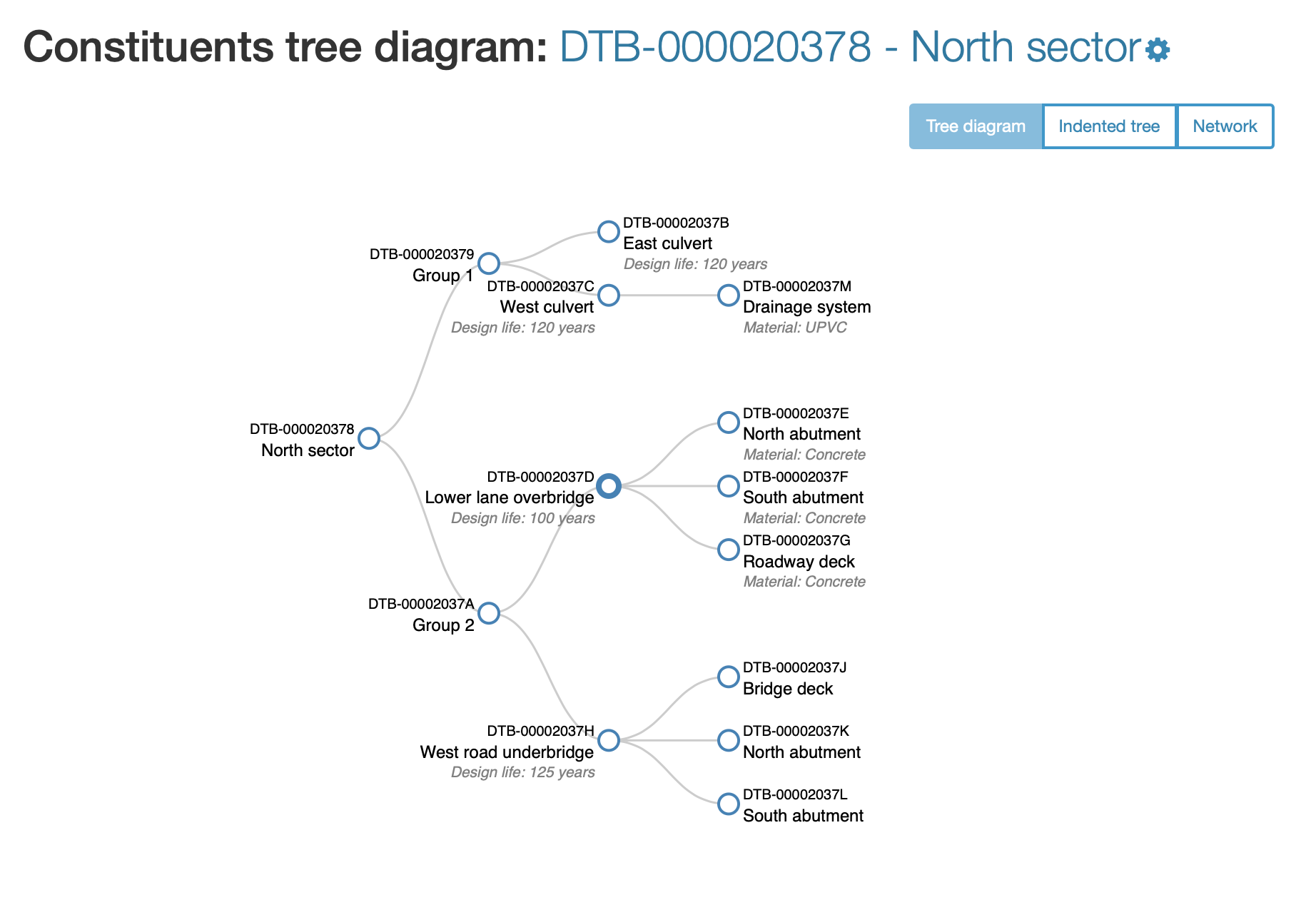
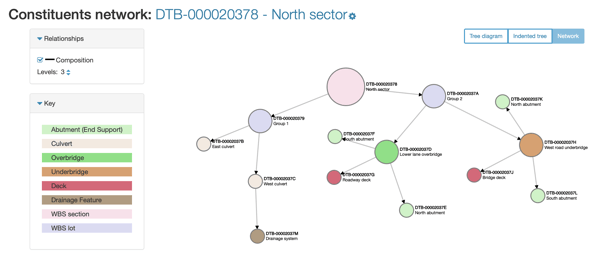
If you are working on a rail project in the UK, AIMS is suitable for delivery in accordance with GRIP (Governance for Railway Investment Projects). As the project moves from one stage to the next, the asset information needs will change and AIMS can be adapted as the attributes are defined.
The resultant asset information is suitable for the hand back stage (GRIP stage 7) as it can be consumed by any EAMS application, if that is the desired outcome.
Secure XML web services can be used to query or update asset data, or to communicate between separate instances of the system, allowing managed transfer of asset class specifications and information on specific assets between project owner and subcontractors.
User profiles ensure that internal and sub-contractor staff have access to only the information that they need. When they update a record this data is passed back to the data owner, with configurable verification and approval workflows where required.
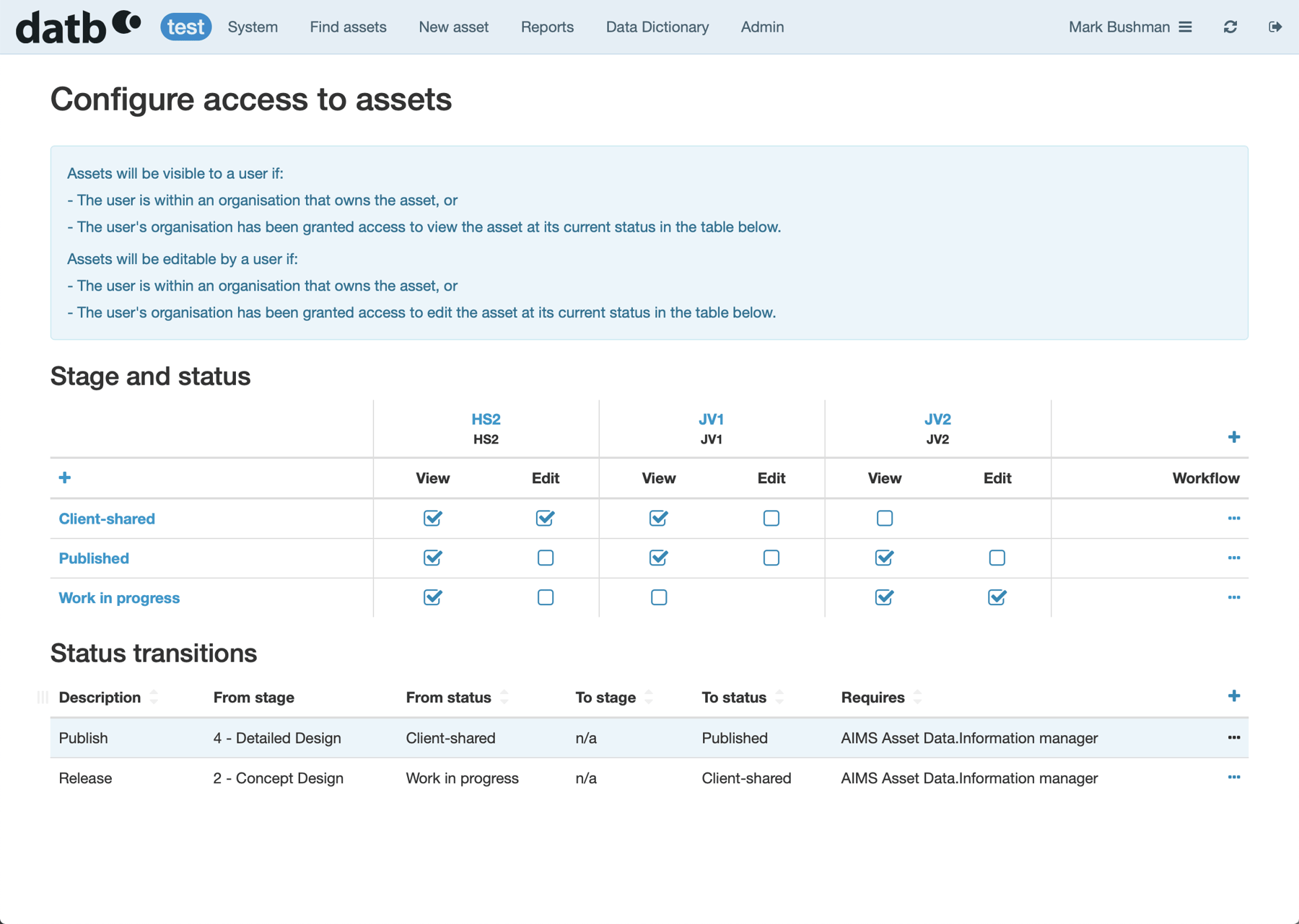
Additionally, thanks to AIMS' temporal data maintenance functionality, point-in-time comparison of current and historical asset information is instantly available (see the Historical Comparison image below).
This is highly configurable with selective access to attributes by organisation/contractor. For example the project owner might maintain financial information not available to contractors; contractor teams can define internal approval status attributes that will not be delivered to the project owner.
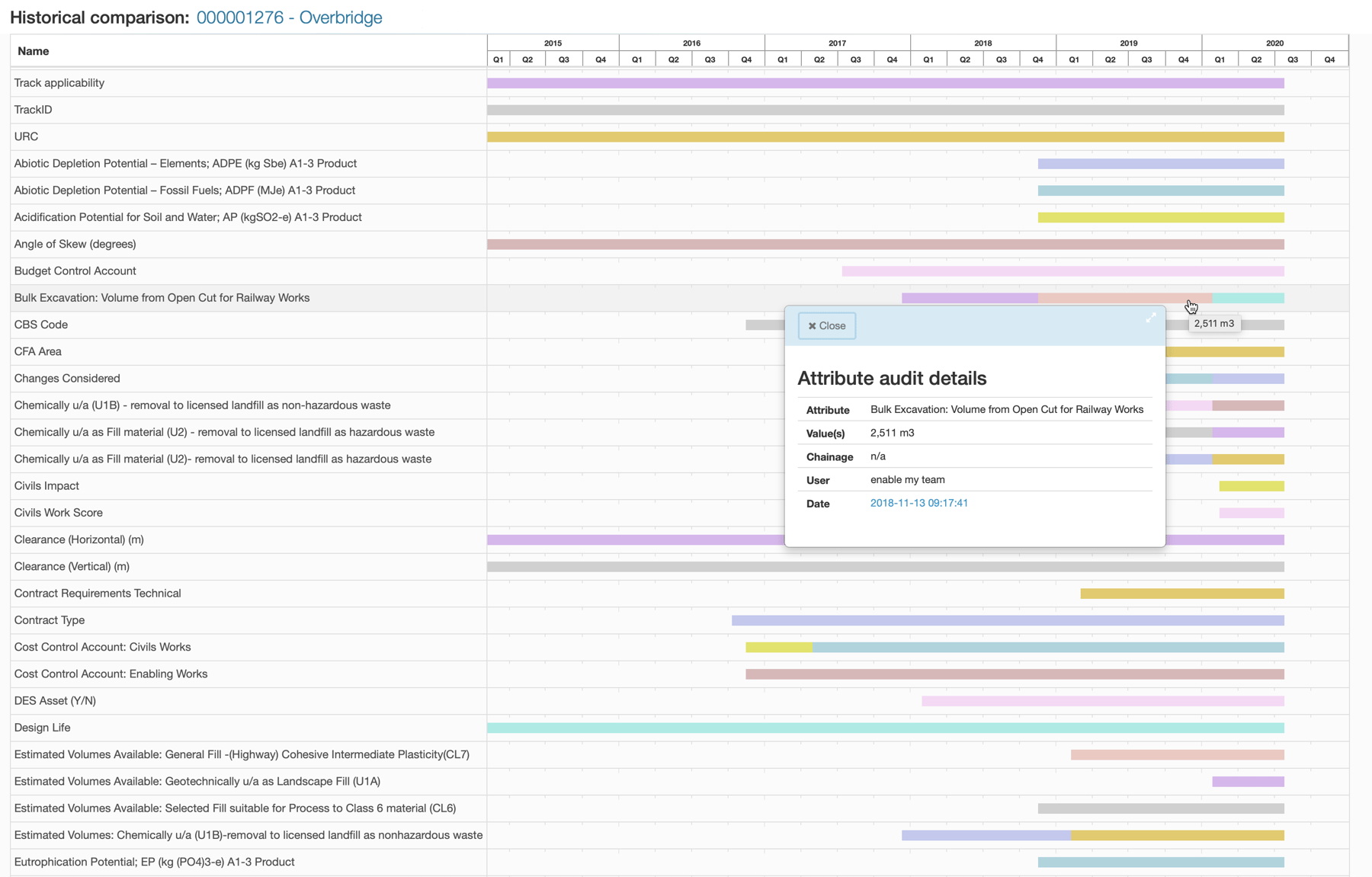
Contractors can also define their own private asset classes, for instance to allow detailed design of the composition of major assets. Assets of these private classes are excluded from data deliveries to the project owner.
AIMS has a fully configurable reporting capability. Complete and easily extensible reporting is available within the product.
Where physical delivery is required of asset information packages, AIMS will generate PDFs containing the necessary information for cascade to your teams/sub contractors.
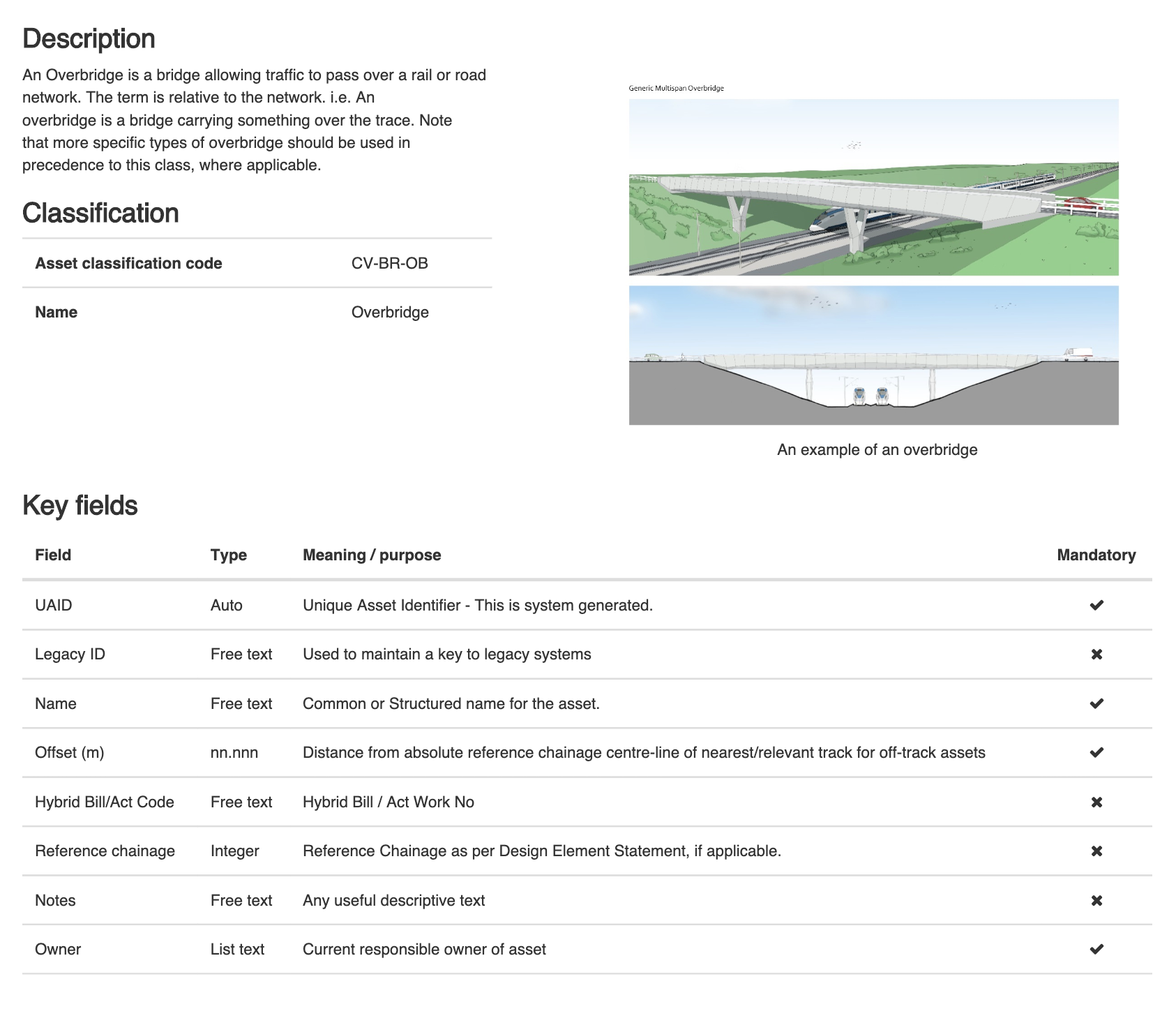
AIMS is a ready-to-go application that is highly configurable by its administrative users. If you require additional functionality, it's not a problem. As AIMS is based on kinodb (our development & deployment platform) new capabilities can be added with ease.
AIMS is ideally suited to cloud deployment, enabling technical deployment in just a few days and providing for massive scalability and resilience
AIMS is quick and easy to implement and can be configured to your asset information needs.